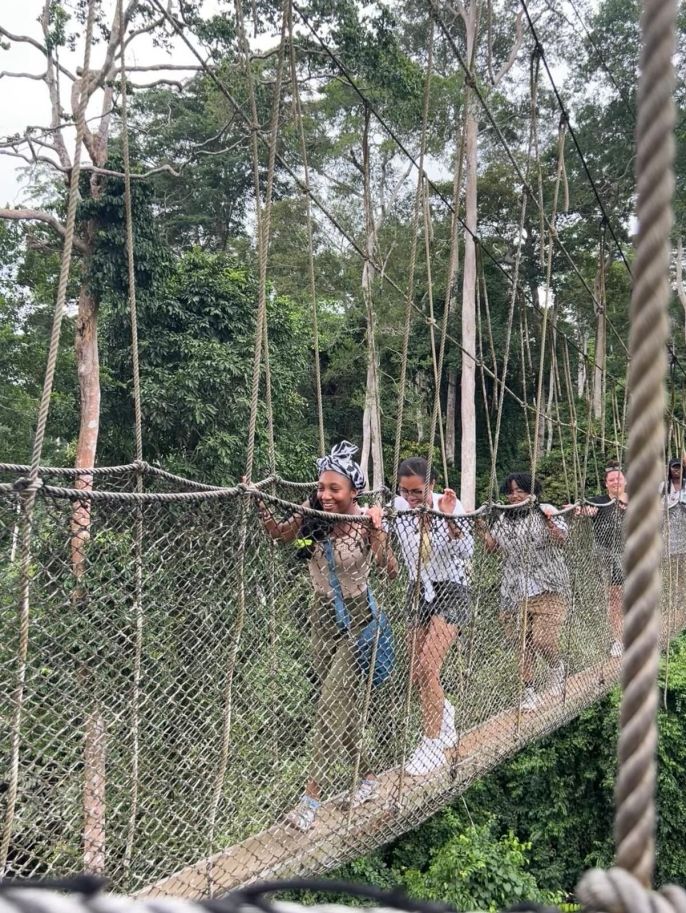Lessons from the Past
Today, the Global Navigators received an interactive glimpse of the Trans-Atlantic Slave Trade. After a 3 hour and occasionally bumpy bus ride through remote villages, the group arrived to the Assin Mason Slave River for a guided tour. Assin Manso was the final link in the slavery route from northern Ghana, and it was known to have been the largest slave market for merchants supplying slaves to the forts and castles along the coast. The river where the slaves washed themselves is called ‘NNONKO NSUO’ meaning Slave River and here is where the slaves were washed for their final bath in their motherland. It’s customary for students whose family is a part of the African diaspora to take the final walk and bath and to follow the exact path their ancestors took. The tour provided students with less widely-known historical context of the beginnings of the slave trade, misconception regarding the role local leaders played in the slave trade, and general information on the ancestral grounds.

The Global Navigators then ventured to the Cape Coast (once known as the Gold Coast of West Africa) slave castle to learn of slave trading in the region. The Cape Coast Slave Castle was one of around 40 “slave castles” that served as prisons and embarkation points for slaves en route to the Americas (the Caribbean, South America, and the U.S.). Thousands of enslaved Africans from regions near and far, sometimes hundreds of miles away, were taken to these castles to be sold to slave ships. As slaves were marched shackled to the awaiting slave ships, they passed through the "Door of No Return” to symbolize their final moments in Africa.

To help the students release the undeniable emotions they compiled during the day, the final activity was a hike through the Kakum National Park. At the park, the Global Navigators wobbled their way through 7 suspension bridges which forms a 333-meter long canopy walkway. The bridges are suspended up to 27 meters above the forest floor from trees that are over 300 years old. All Global Navigators finished the course and proudly flexed their minor rope burns and sore muscles!

Yebehyia Bio!
Asia
Twi Word of the Day—Tapoli
The Asanka, earthenware dish, is a Ghanaian grinding pot that is made out of clay with ridges inside. It comes with a wooden masher called eta or tapoli in the local language.
Related Posts

Student Project: Shared Respect
During this program, the participants worked in groups to create projects reflecting their experiential learning from the last three weeks. The following is a selection from Sabrina Addo and Maya... keep reading

Tying Up Loose Ends
With only a few days left in our program, we are embracing every opportunity to make lasting memories and reflect on our incredible journey. One of the highlights of this... keep reading

Visiting Ghana’s First Cocoa Farm
Student Blog Takeover: Milo and Anthea visit Ghana's first cocoa farm








